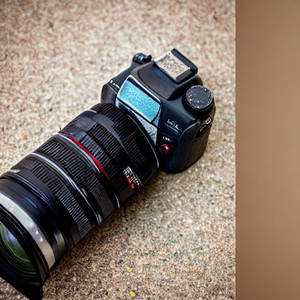The Sony a9 III is the essential full-frame mirrorless camera to be worked around an overall screen CMOS sensor, and we question it’ll be the last. So what is overall shade and what’s the importance here for visual specialists?
Moderate shades
An overall shade is one that gets all of its pixels meanwhile. It’s important to understand the other option in order to determine the potential benefits of this: the unique screens used in the majority of enormous sensor cameras.
Most cameras use a mechanical screen part to end their openings, and the bigger part use one to start them, too. Mechanical screens are commonly a movement of slight sharp edges that cover the sensor to hold it back from getting any additional light, outside the time you really want to get an image. Be that as it may, while they move quickly to start and end the receptiveness, they’re not second. This infers that the most elevated place of the photo is gotten an insignificant piece of a second preceding the furthest reaches of the photo. This has virtually no effect in many situations, but there are times when it has an impact on the image, and this is where global shades come in handy.
Overall screens
The Sony a9 III is the important ILC to utilize a Stacked CMOS sensor with an overall screen.
There are three crucial benefits to overall screen, all of which associate with conditions where the scene changes incomprehensibly quickly.
The most clear of these is streak photography, where the real blast enlightens the scene for simply a minute piece of a second. To be sure, even the speediest mechanical screen will take around 1/250th of one second to cross the sensor, so any transparency more restricted than this requires the second wrap of the shade to start closing before the first has totally opened. This infers there’s no great explanation for time where the entire sensor is revealed, so a lone burst of light can’t enlighten the whole picture. This is the flash sync speed.
With an overall screen this isn’t an issue: the whole sensor is gotten at exactly the same time, so the whole picture will be illuminated by the flash, regardless, for the most restricted transparency. This suggests you can include strobes in their most noteworthy, single burst mode, rather than relying upon quick sync, which endeavors to beat or widen the term of the gleam.
All things being equal, this infers an overall screen camera can use the shade speed to change the establishment wonder of a burst picture, whether or not with short openings. The blast level and opening will control the transparency of the nearer view, but you can cloud the wide range of various things in the image, or hold the establishment back from covering using the shade speed.
Peculiarly in any case, at astoundingly short openings you risk something in opposition to the issue moderate shades have: instead of growing the range of the glint to oblige a drowsy shade, you risk the transparency being unreasonably short to get the burst’s all’s outcome.
Banding
The second situation where an overall shade ends up being helpful is another where you have short pulses of light like in Drove lighting and shows. Driven lights as often as possible turn on and off quickly to control their evident splendor, while Drove shows gleam to show different assortments or brightnesses, or strengthen to show a substitute picture. Because each component of the image is capturing a slightly different amount of time, it is possible to accidentally catch this glinting example on an ever-changing screen. This doesn’t happen with an overall screen since it gets a lone second. There is still a chance that the openness will change from shot to shot as the LEDs turn on and off, but you won’t see distracting groups in your photos.
Notwithstanding, with incredibly short openings conceivably’s Determined grandstand sheets will appear to be some inadmissible assortment. Driven shows control which assortment they appear by making their changed concealed parts sparkle at different rates, so there’s an open door you’ll get an image at a subsequent when a part of the parts aren’t illuminated, or where you just got a piece of their glimmer model.
Turning
The third benefit of an overall screen is that you can’t get deformed pictures because your subject has moved while the shade was opening and closing. If your openness is too long, you will always experience movement obscure, but there is no risk of development occurring between the beginning and end of the openness. This is only sometimes an issue with mechanical screens: on a fundamental level, an overall shade will avoid bending with even the speedier moving subjects, for instance, moving rotor edges or a golf swing, but it’s truly exceptional to snap an image with a mechanical screen and see noticeably bent improvement.
It matters a lot more in video, where electronic screens that read out continuously are common in cameras. Even though the most recent cameras are probably very fast, many 4K-compatible cameras have open edges that take more time to start and end than with a good mechanical shade. This suggests there are more kinds of subject development or camera advancement that produce obvious mutilation. So video shooters are most likely going to see the worth toward the finish of the moving screen influence that a passing overall shade brings.

